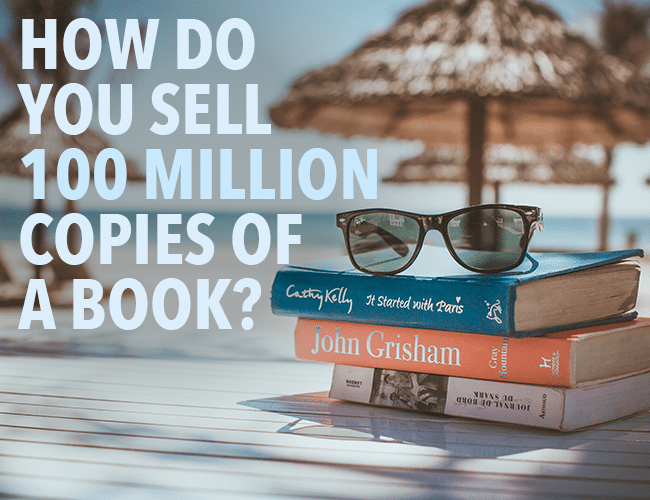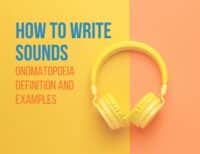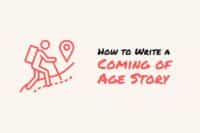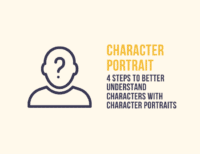Recently, as I was in the middle of revising my book, a question occurred to me: “How do you sell 100 million copies of a book? Is there a way to reverse engineer that kind of success?” Because if we want to reach readers with our stories, we need to know how to sell books.

In this post, we will dissect what makes the top best-selling books of all time books so popular, and then look at how we can apply those lessons to our own writing.
“How do you sell 100 million copies of a book?” It's an interesting question, right? One we'd all love to know the answer to.
Of course, to sell 100 million copies of any book, you have to have marketing, PR, a sales team, and so on. But even the best team of marketing geniuses couldn't make a bad book sell 100 million copies.
Writing a Great Book Isn't Enough, Though
I found that there are only nine books that have sold over 100 million copies (excluding religious, ideological, philosophical, or political books), and looking over them, I found that they have five criteria in common.
They're not quite rules, because not all nine books follow them. In fact, only one of the five criteria is found in all nine of the books.
However, if you want to know how to sell books — and sell a lot of copies of your books — you should consider paying attention to each one of them.
The Best-Selling Books of All Time
First, what are the best-selling books of all time? Here they are in order, from Wikipedia's full list of best-selling books of all time.
- Don Quixote by Miguel de Cervantes
- A Tale of Two Cities by Charles Dickens
- The Alchemist by Paolo Coelho
- The Little Prince by Antoine de Saint-Exupéry
- Harry Potter and the Philosopher's Stone by J.K. Rowling
- The Hobbit by J. R. R. Tolkien
- And Then There Were None by Agatha Christie
- Dream of the Red Chamber by Cao Xueqin
- Alice in Wonderland by Lewis Carroll
Have you read all of these? Do any surprise you? Let me know in the comments.
What Doesn't Matter if You Want to Be a Mega-Bestseller
But before we talk about what types of stories will sell a lot of copies, let's talk about what won't help your book sell.
Sex doesn't sell.
To sell 100,000,000 copies of your book, you don't need to write about sex. That might help your otherwise midlist book sell more copies, but it won't get you on the list on its own.
In fact, only three of the books on the list of nine top-selling books have any romantic element at all — and one of those is about an old man!
Realism needs to get realistic.
Sadly, for all the realists out there, only one book on this could be argued to be part of the realist genre. The rest all have elements of the fantastic.
Why so serious?
I was an English major, and I spent my high school and college career, and even after, studying serious books. However, none of the books I studied in school end up on this list.
It's not that serious literature isn't important. It's just that it doesn't have large enough of an audience to sell 100 million copies or more.
5 “Rules” to Write a Book that Can Sell 100 Million Copies
How do you write a bestseller — no, a mega-bestseller? What do these nine books have in common?
As I looked closer at the nine books on the list of top bestsellers, I realized there are five criteria they have in common:
1. Write in English
Five of the nine books were originally written in English. Each of the other four were written in a different language: Spanish, Portuguese, French, and Mandarin Chinese, making English by far the most popular language for mega-best-selling books.
This isn't fair, of course.
In a fair world, a book would have the same chance of becoming popular whether it was written in Hindi, Spanish, Arabic, or any other language. But that's not what's happened on this list.
Unfortunately, if you don't speak English, or if you write in another language, following this “rule” requires a tremendous amount of effort. Some people were born into this advantage, but others have to work harder to achieve it.
That being said, this is the most tenuous of the five “rules,” and it probably won't last very long. English is only the third most spoken language in the world, behind Chinese and Spanish. I believe someday soon, there will be more mega-best-selling books by non-English speakers than English ones.
2. Write for Children or Young Adults
Five of the nine mega-bestsellers were written for children or young adults (and you could make an argument that six are, since the protagonist of Dream of a Red Chamber begins the story as a young adult).
Alice is seven. The little prince is a young boy. The protagonist of The Alchemist, Santiago, is repeatedly called “the boy.” Harry Potter is eleven in The Philosopher's Stone. Bilbo Baggins, in the The Hobbit, is fifty years old, but first, he's a young fifty, and second, Tolkien intentionally wrote The Hobbit as a bedtime story for his three young sons.
If you want to sell 100 million copies of your book, write for kids.
3. Set Your Story in Two Worlds
This was the most surprising and important realization I had as I researched this list. Here's why:
Nine of nine novels have two different worlds.
This is most apparent in Alice in Wonderland, which invented a whole vocabulary to talk about alternate dimensions. Going “down the rabbit hole” has become cliché for entering a second world, and it all started with Lewis Carroll.
Many of the others have equally obvious second worlds:
- Harry Potter‘s wizarding world and the Muggle world
- The Little Prince‘s planet B612
- Dream of the Red Chamber‘s heavenly world
- A Tale of Two Cities‘ stable London versus the revolutionary Paris
- And Then There Were None‘s strange island where killers are brought to justice
Some of the others are less obvious, though still present:
- Don Quixote lives in a fantasy world of his own imagination, even as the rest of the characters live in the real world.
- The boy in The Alchemist is a normal shepherd, until he travels to Egypt and enters the alchemist's mystical world.
- The Hobbit exists entirely in a fantasy world. However, there is still a huge contrast between the world of the hobbits versus the world of the dwarves, the former comfortable and very normal and the latter filled with treasure, dragons, and adventure.
Moreover, if you look at the books further down the list of top-selling books of all time, you'll see that a huge majority of them have the same contrast.
4. Use a Whimsical Tone
Six of nine of the best-selling books of all time have a whimsical tone.
And it makes sense, right? Because books that take themselves too seriously exclude people. Serious books are important, just as books for adults are important. However, if you want to sell a lot of copies, you'll be much more successful if you don't take yourself too seriously.
5. Write in the Bildungsroman genre
Up to seven of these nine books are bildungsroman (depending on how you interpret them).
Bildungsroman is a literary genre that basically means “coming of age” story. They are almost always stories about a hero going from innocence to experience.
A few other features of the genre:
- It usually begins with a loss (often the death of parents).
- The protagonist gets to maturity and acceptance from society but only after going through a lot of conflict.
- There is often some kind of mentor to help guide the protagonist on his journey.
Note that most fantasy novels are bildungsroman, but this genre also includes books outside of the fantasy genre.
It's Not About Selling a 100 Million Copies
Yeah, it would be nice to sell 100 million copies of your book. Of course it would.
The point isn't to sell 100 million copies, though. It's to write a book that brings meaning to the lives of your readers.
And if I've learned anything from studying these nine books, it's that these five guidelines will help you write a book that connects with readers.
Now, go get writing!
Can you apply these to your own novels? Let me know in the comments.
PRACTICE
Begin a story about two worlds. Is one full of magic and the other mundane and everyday? Is one on Earth and the other on another planet? Is one in North America and the other in Asia? Is one in someone's mind and the other the reality around them?
Take fifteen minutes to write. Then, share your world-hopping story in the comments below. Be sure to leave feedback on other writers' budding mega-bestsellers!







But even the best team of marketing geniuses couldn’t make a bad book sell 100 million copies.
*cough* Twilight!* *cough* 50 Shades! *cough*
Well, but they didn’t quite make the list now, did they? Plus, objectively, all five criterias apply to those. Marketing isn’t to blame. They just cather to a wide market of thirsty young people with little taste for reading (an audience that’s less critical of the content and the quality of writing). That’s the way I see it.
Wikipedia’s? No. There’s no telling when the last time that was updated. However, a quick search of how many books they sold indicates both sold 100 million copies. That, and them being bad books, is why I mentioned them. 🙂
Could one imagine if 50 Shades were written with much more florid, “literary” prose? If 50 Shades were “more” realistic? If sex – however niche and for bored soccer moms [who cares about them? I’m certainly not one of them!] – were not emphasized so much …
It would sell as much, plus stand the test of time. Never mind the K-12 classrooms … education modalities change with technology and things like decentralizing where it takes place ….
Sold a lot, but not 100 million copies!
These saved images from my web searches seem to disagree, sir: http://imgur.com/a/CIDOB
Just following up on this after doing some more research. It seems the series DID sell 100 million copies, but not any individual book, as each of these did. If you include series, there would be many more on this list.
Interesting. One would think that the web searches would be more specific. Thanks for getting back to me, sir.
Ah, but the authors of those ‘bad’ books are laughing all the way to the bank and back, then purchasing another wheelbarrow for the cash from the movies.
Twilight and 50 Shades of Grey created a powerful emotional experience. I believe that is another factor to selling lots of books.
Which was my point.
*Cough* Divergent!
*Cough* Insurgent!
*Cough* James Patterson’s Zoo! (James Patterson doesn’t write his own books, though; his publisher just slaps his name on the cover and then “instant bestseller!” James Patterson’s novel Zoo was written by Michael Ledwidge)
None of those books have lasting success like the hobbit or harry potter…and none of their installments are anywhere near 100 million copies per individual book. In fact the average book sales of harry potter beats the grand total of hunger games(55 million copies of deathly hallows vs the 50 million copies of the ENTIRE hunger games trilogy)
Hi Joe,
I purchased your “Let’s Write a Short Story,” and I must say I found your insights helpful. I am still struggling to reach readers who want to explore the Africa settings. Once I am done with the two stories that I have on the drawing board, I will focus themes that may appeal to the young and the young-at-heart.
Thanks for this! What a great article 🙂
Thanks Sarah!
I will start off small. I write children’s books. I would like to sell just 10-20 for starters. They are written in English. I think they are pretty good books. Let’s go!
Awesome. Good luck!
Another thing these books all have in common that isn’t on this list is that they are probably all part of a classroom curricula, which helps not only boost sales, but also keeps them in print decade after decade.
Of course, a lot of the things on that list are what help them become classroom material. Still, a super interesting post.
Curriculum, please, Jason. Curricula is plural.
Chicken or egg question, right? Were they put on the curriculum because they were great books or did they become great books because they were put on the `curriculum?
Useful article. Thank you.
You bet. Thanks for reading Justine!
Just read The Great Gatsby recently; even that can be seen as two world. Nick, the narrator, seems to keep himself a ‘down to earth’ Midwesterner, in comparison to Gatsby’s and Daisy’s world of fantastical excess. Nick was young. It’s from his point of view and what he learned from observing his slightly older acquaintances. No wonder that story worked!
Totally. Great example!
A most interesting and informative article. I was especially interested in the 2 worlds idea. I’m going to work on that in my future novels.
Glad you found that helpful! It was a huge revelation to me, too.
there is another technique of course. write ‘popular’ ‘scary’ stories 2 or 3 times a year and eventually sell almost 500 million novels like a certain Mr.King. And apparently many people don’t like scary novels…
Well, I’m already doing everything on their list, so the article seems pretty worthless to me! If this article were all you had to do to sell 100 million copies, then I would’ve sold 100 million copies of Magic Teacher’s Son (I’d settle for 100 thousand).
I’m feeling cynical about this. I think how many books get sold has very little to do with quality of the book, or the subject matter!
Most of the bestsellers are mediocre books, and some of them are downright awful.
Meanwhile, amazingly great books from small press publishers get very few sales, even though they’re much better written than the bestsellers!
It’s not about quality or subject matter. The article says writing for children or young adults will make your book sell 100 million copies?
Yeah, right — tell that to the authors of the other million YA, MG, and children’s books that didn’t sell very many copies at all!
I don’t know what the secret to being a bestseller is, but I know it helps to have a big press publisher who throws lots of money into advertising and product placement. By product placement, I mean publishers pay big money to have books prominently displayed in bookstores near the entrance, big money!
It also helps to have a famous name. Do you think Sarah Palin is a bestselling author based on her writing ability? LOL, I doubt she’s even literate!
What about Bill O’Reilly?
And then there are some books that are inexplicably bestsellers, like the “50 Shades of” books, which started as fan fiction and was self-published.
Joe, Good analysis of the commonalities of how books (at least in the past) can be well written. I (like several commenters below) don’t agree that the reading quality of a book necessarily determines it’s sales success.
Writing a well written book with a story that is captivating to multiple broad segments of the reading population is only the first part of the successful book production process. Especially considering today’s world of evolving access for writers and their books to readers, publishing, marketing, sales vehicles and their greatly increased competition with the rapidly growing numbers of other writers.
The book sales process itself has a broad number of variables contributing to a respective books success beyond what an excellent writer can contribute. Not the least of which is the author recognition factor. You can’t read many author biographies without coming across numerous books by now famous authors (Stephen King for example) that were once rejected by publishers and or readers before they were famous authors. Then the same once rejected books by the same formerly unknown author – became best sellers as well as receiving great critical acclaim once that author was “discovered.”
By the same logic one must conclude their are probably thousands of potentially well written and potentially great – bestseller books (assuming they could receive the necessary exposure for successful sales) that have been destroyed over time, or are still moldering in boxes, file drawers, and or in the electron shadows of storage hard drives with their access being lost to insufficient back version reading word processing software.
The TWP does a great job of helping writers to become better at their writing craft. Unfortunately, TWP rarely seems to understand, and or at least put forward (as in this article) the comprehensive differences between great writing, and the requirements for successful writing.
A short look at references as to why only a very few of even the best well written books – are successful. Some quantifiable insights into the other parts of what makes, or limits books from selling a 100 million copies – or even 3000 copies – successful or not.
We now have more than 7.34 billion people on the planet of which 324.7 million reside in the US. (http://www.census.gov/popclock/)
Of the global population there are about 1,5 billion people worldwide that speak English, of whom only 375 million are native speakers. (https://www.statista.com/statistics/266808/the-most-spoken-languages-worldwide/)
Globally the average reading time per capita is highest (#1 globally) in India – at 10 hours and 42 minutes per week. That compares to the US (#22 globally) at 5.42 hours per week. (http://mentalfloss.com/article/55344/which-country-reads-most)
Not everyone is a book reader. Only about 12% of the US population open and read part or a whole book each month. (http://www.pewresearch.org/fact-tank/2015/10/19/slightly-fewer-americans-are-reading-print-books-new-survey-finds/ft_15-10-09_books_averageread/)
The number of US book readers remains in decline. The number of non-book readers has grown from a low of 8% in 1978 – to a high of 23% in 2014. A quarter of the US population never reads less than a book a year. (http://www.theatlantic.com/business/archive/2014/01/the-decline-of-the-american-book-lover/283222/)
According to Google in 2010 There Are 129,864,880 Books in the Entire World/
(http://mashable.com/2010/08/05/number-of-books-in-the-world/#K7aADadWPkqH)
Recent annual book publishing by country. (https://en.wikipedia.org/wiki/Books_published_per_country_per_year)
According to the latest Bowker Report (September 7, 2016), more than 700,000 books were self-published in the U.S. in 2015, which is an incredible increase of 375% since 2010. And the number of traditionally published books had climbed to over 300,000 by 2013 according to the latest Bowker figures (August 5, 2014). The net effect is that the number of new books published each year in the U.S. has exploded by more than 600,000 since 2007, to well over 1 million annually. At the same time, more than 13 million previously published books are still available through many sources. Unfortunately, the marketplace is not able to absorb all these books and is hugely over saturated. (https://www.bkconnection.com/10-awful-truths-about-book-publishing).
The Cold Publishing Equations: Books Sold + Marketability + Love. The average book sells 3000 copies in its lifetime (Publishers Weekly, 2006). The average traditionally published book which sells 3,000 in its entire lifetime in print only sells about 250 to 300 copies its first year. The average digital only author-published book sells 250 copies in its lifetime. If you sell fewer than 1500 copies at a traditional publisher, you’re generally considered a commercial disaster by any publisher but a very, very tiny one who paid you an advance less than $1000. (http://www.kameronhurley.com/the-cold-publishing-equations-books-sold-marketability-love/)
Thanks for your post and the research on books. I’ve learned a lot more through you. I fear that many writers write, just because they love writing, but know that there is slim chance of their books being bought, (or downloaded) by more than ten people.